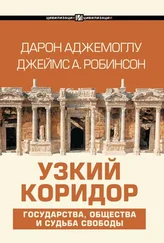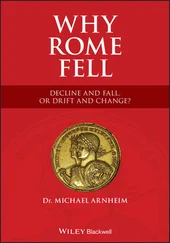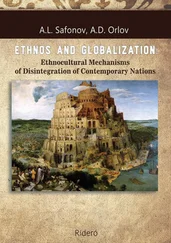THE LONG SUMMER
About 15,000 BC, the Ice Age came to an end as the Earth’s climate warmed up. Evidence from the Greenland ice cores suggests that average temperatures rose by as much as fifteen degrees Celsius in a short span of time. This warming seems to have coincided with rapid increases in human populations as the global warming led to expanding animal populations and much greater availability of wild plants and foods. This process was put into rapid reverse at about 14,000 BC, by a period of cooling known as the Younger Dryas, but after 9600 BC, global temperatures rose again, by seven degrees Celsius in less than a decade, and have since stayed high. Archaeologist Brian Fagan calls it the Long Summer. The warming-up of the climate was a huge critical juncture that formed the background to the Neolithic Revolution, where human societies made the transition to sedentary life, farming, and herding. This and the rest of subsequent human history have played out basking in this Long Summer.
There is a fundamental difference between farming and herding and hunting-gathering. The former is based on the domestication of plant and animal species, with active intervention in their life cycles to change genetics to make those species more useful to humans. Domestication is a technological change that enables humans to produce a lot more food from the available plants and animals. The domestication of maize, for example, began when humans gathered teosinte, the wild crop that was maize’s ancestor. Teosinte cobs are very small, barely a few centimeters long. They are dwarfed by a cob of modern maize. Yet gradually, by selecting the larger ears of teosinte, and plants whose ears did not break but stayed on the stalk to be harvested, humans created modern maize, a crop that provides far more nourishment from the same piece of land.
The earliest evidence of farming, herding, and the domestication of plants and animals comes from the Middle East, in particular from the area known as the Hilly Flanks, which stretches from the south of modern-day Israel, up through Palestine and the west bank of the River Jordan, via Syria and into southeastern Turkey, northern Iraq, and western Iran. Around 9500 BC the first domestic plants, emmer and two-row barley, were found in Jericho on the west bank of the River Jordan in Palestine; and emmer, peas, and lentils, at Tell Aswad, farther north in Syria. Both were sites of the so-called Natufian culture and both supported large villages; the village of Jericho had a population of possibly five hundred people by this time.
Why did the first farming villages happen here and not elsewhere? Why was it the Natufians, and not other peoples, who domesticated peas and lentils? Were they lucky and just happened to be living where there were many potential candidates for domestication? While this is true, many other people were living among these species, but they did not domesticate them. As we saw in chapter 2 in Maps 4 and 5, research by geneticists and archaeologists to pin down the distribution of the wild ancestors of modern domesticated animals and plants reveals that many of these ancestors were spread over very large areas, millions of square kilometers. The wild ancestors of domesticated animal species were spread throughout Eurasia. Though the Hilly Flanks were particularly well endowed in terms of wild crop species, even they were very far from unique. It was not that the Natufians lived in an area uniquely endowed with wild species that made them special. It was that they were sedentary before they started domesticating plants or animals. One piece of evidence comes from gazelle teeth, which are composed of cementum, a bony connective tissue that grows in layers. During the spring and summer, when cementum’s growth is most rapid, the layers are a different color from the layers that form in the winter. By taking a slice through a tooth you can see the color of the last layer created before the gazelle died. Using this technique, you can determine if the gazelle was killed in summer or winter. At Natufian sites, one finds gazelles killed in all seasons, suggesting year-round residence. The village of Abu Hureyra, on the river Euphrates, is one of the most intensively researched Natufian settlements. For almost forty years archaeologists have examined the layers of the village, which provides one of the best documented examples of sedentary life before and after the transition to farming. The settlement probably began around 9500 BC, and the inhabitants continued their hunter-gatherer lifestyle for another five hundred years before switching to agriculture. Archaeologists estimate that the population of the village prior to farming was between one hundred and three hundred.
You can think of all sorts of reasons why a society might find it advantageous to become sedentary. Moving about is costly; children and old people have to be carried, and it is impossible to store food for lean times when you are on the move. Moreover, tools such as grinding stones and sickles were useful for processing wild foods, but are heavy to carry. There is evidence that even mobile hunter-gatherers stored food in select locations such as caves. One attraction of maize is that it stores very well, and this is a key reason why it became so intensively cultivated throughout the Americas. The ability to deal more effectively with storage and accumulate food stocks must have been a key incentive for adopting a sedentary way of life.
While it might be collectively desirable to become sedentary, this doesn’t mean that it will necessarily happen. A mobile group of hunter-gatherers would have to agree to do this, or someone would have to force them. Some archaeologists have suggested that increasing population density and declining living standards were key factors in the emergence of sedentary life, forcing mobile people to stay in one place. Yet the density of Natufian sites is no greater than that of previous groups, so there does not appear to be evidence of increasing population density. Skeletal and dental evidence does not suggest deteriorating health, either. For instance, food shortage tends to create thin lines in people’s tooth enamel, a condition called hypoplasia. These lines are in fact less prevalent in Natufian people than in later farming people.
More important is that while sedentary life had pluses, it also had minuses. Conflict resolution was probably much harder for sedentary groups, since disagreements could be resolved less easily by people or groups merely moving away. Once people had built permanent buildings and had more assets than they could carry, moving away was a much less attractive option. So villages needed more effective ways of resolving conflict and more elaborate notions of property. Decisions would have to be made about who had access to which piece of land close to the village, or who got to pick fruit from which stand of trees and fish in which part of the stream. Rules had to be developed, and the institutions that made and enforced rules had to be elaborated.
In order for sedentary life to emerge, it therefore seems plausible that hunter-gatherers would have had to be forced to settle down, and this would have to have been preceded by an institutional innovation concentrating power in the hands of a group that would become the political elite, enforce property rights, maintain order, and also benefit from their status by extracting resources from the rest of society. In fact, a political revolution similar to that initiated by King Shyaam, even if on a smaller scale, is likely to have been the breakthrough that led to sedentary life.
The archaeological evidence indeed suggests that the Natufians developed a complex society characterized by hierarchy, order, and inequality—beginnings of what we would recognize as extractive institutions—a long time before they became farmers. One compelling piece of evidence for such hierarchy and inequality comes from Natufian graves. Some people were buried with large amounts of obsidian and dentalium shells, which came from the Mediterranean coast near Mount Carmel. Other types of ornamentation include necklaces, garters, and bracelets, which were made out of canine teeth and deer phalanges as well as shells. Other people were buried without any of these things. Shells and also obsidian were traded, and control of this trade was quite likely a source of power accumulation and inequality. Further evidence of economic and political inequality comes from the Natufian site of Ain Mallaha, just north of the Sea of Galilee. Amid a group of about fifty round huts and many pits, clearly used for storage, there is a large, intensively plastered building close to a cleared central place. This building was almost certainly the house of a chief. Among the burials at the site, some are much more elaborate, and there is also evidence of a skull cult, possibly indicating ancestor worship. Such cults are widespread in Natufian sites, particularly Jericho. The preponderance of evidence from Natufian sites suggests that these were probably already societies with elaborate institutions determining inheritance of elite status. They engaged in trade with distant places and had nascent forms of religion and political hierarchies.
Читать дальше












